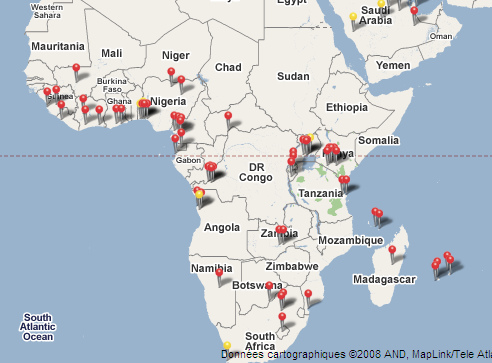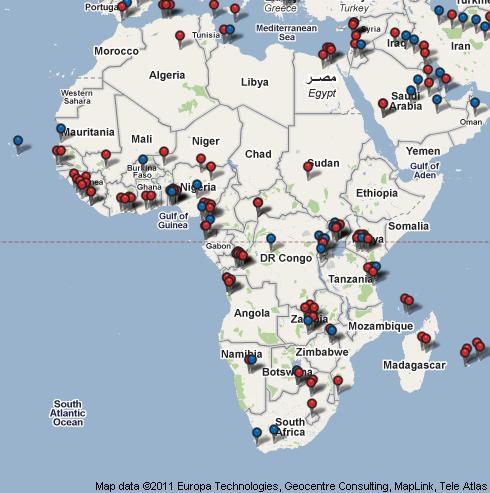WiMAX makes steady progress, LTE on the horizon
WiMAX, an acronym for “Worldwide Interoperability for Microwave Access, is an IP based, wireless broadband access technology that provides performance similar to 802.11/Wi-Fi networks with the coverage and quality of cellular networks. WiMAX is intended for metropolitan areas, but can provide broadband wireless access up to 30 miles (50 km) for fixed stations, and 3 – 10 miles (5 – 15 km) for mobile stations. In contrast, the WiFi/802.11 wireless local area network standard is limited in most cases to only 100 – 300 feet (30 – 100m).
Africa has been quick to adopt WiMAX technology, in part due to a changing regulatory environment, new licenses, cheaper bandwidth, less expensive WiMAX and multi-mode devices, and government programs such as NEPAD. In early 2010, WiMAX Forum found that the technology covers 108 million people over 142 developments in Africa and the Middle East. Of course, this statistic refers to the potential number of WiMAX users and not the actual number of users. Still, Africa has made steady progress, beginning in 2005 and accelerating through 2008. The impetus for progress is explained in Sandra Lee’s 2007 whitepaper titled, “WiMAX in Africa: A New Frontier.” Since 2008, the number of WiMAX deployments in Africa has grown roughly two-fold and the number of countries and operators supporting WiMAX technology has grown as well.
2008: Much of Africa is already connected to WiMAX over at least 59 deployments:
2011: The WiMAXMaps.org map lists at least 105 deployments. Algeria, Tunisia, Libya, Egypt, Cape Verde, Mauritania, The Gambia, Mali, Sierra Leone, Burkina Faso, Liberia, Ivory Coast, Ghana, Niger, Nigeria, Central African Republic, Equatorial Guinea, DRC, Uganda, Kenya, Rwanda, Burundi, Tanzania, Zambia, Angola, Zimbabwe, Namibia, Botswana, South Africa, Lesotho, Mozambique, Madagascar, Mayotte, Mauritius, Reunion all utilize or have immediate plans for WiMAX technology:
However, LTE (Long-Term Evolution), the post-3G technology is poised to give WiMAX a run for its money. Although much of Africa was on par or ahead of global developments concerning WiMAX technology, the continent is yet to deploy many LTE networks. Major hurdles include lack of spectrum and lack of suitable mobile devices. Ideal broadcast frequencies for LTE include 700MHz (rural/wide) and 2.6GHz (urban/short), which are generally occupied by broadcasters and militaries, respectively. Regulators and auctioneers have a formidable task ahead of them if they are to vacate these frequencies in a few short years. James Munn, vice president of business development for Sub-Saharan Africa at Qualcomm points out that operators have only recently rolled out 3G services and should wait to recoup costs and ensure quality of service before eying LTE. In fact, Mr. Munn states that it may take 10 years for Sub-Saharan Africa’s LTE services to match those of 3G.
LTE Africa Timeline:
- June 2010: Vodacom attempts LTE network in South Africa
- October 2010: Safaricom attempts LTE network in Kenya
- January 2011: Globacom launches LTE in Nigeria for “demanding corporate customers and high data users.”
- Africa is expected to be the world’s slowest region to move to LTE, accounting for only 1% of the global LTE market base by 2013. (Wireless Intelligence, Dec. 2010)














 Twitter
Twitter Facebook
Facebook Pinterest
Pinterest
[…] men adgangen til det mobile net boomer. Og dermed også til internettet – både takket være udbredelsen af WiMAX og almindelig mobilt net. Fixed broadband development through ADSL (the most commonly used […]
[…] wimax-africa-2011 oafrica.com […]